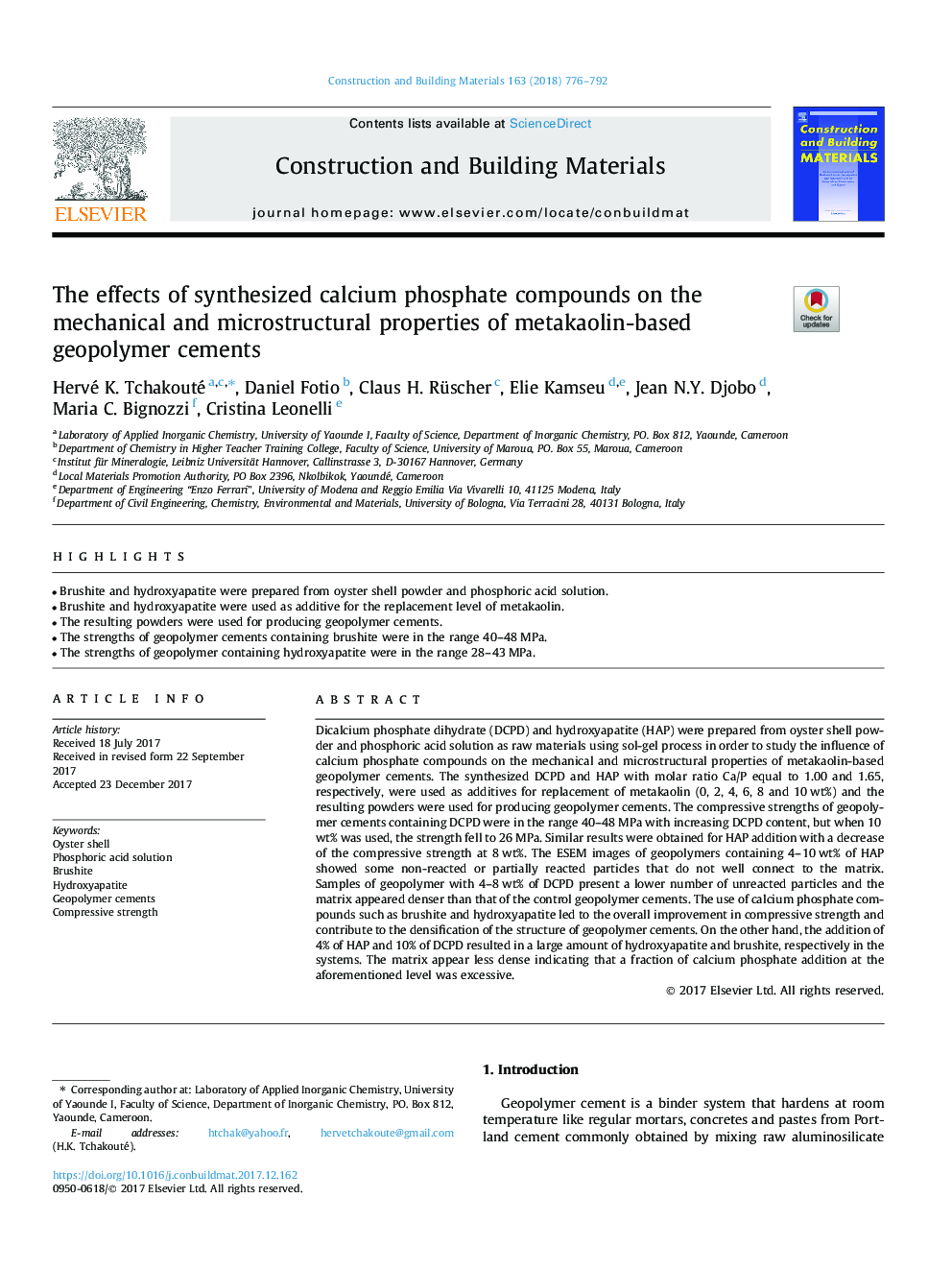| Article ID | Journal | Published Year | Pages | File Type |
|---|---|---|---|---|
| 6716309 | Construction and Building Materials | 2018 | 17 Pages |
Abstract
Dicalcium phosphate dihydrate (DCPD) and hydroxyapatite (HAP) were prepared from oyster shell powder and phosphoric acid solution as raw materials using sol-gel process in order to study the influence of calcium phosphate compounds on the mechanical and microstructural properties of metakaolin-based geopolymer cements. The synthesized DCPD and HAP with molar ratio Ca/P equal to 1.00 and 1.65, respectively, were used as additives for replacement of metakaolin (0, 2, 4, 6, 8 and 10â¯wt%) and the resulting powders were used for producing geopolymer cements. The compressive strengths of geopolymer cements containing DCPD were in the range 40-48â¯MPa with increasing DCPD content, but when 10â¯wt% was used, the strength fell to 26â¯MPa. Similar results were obtained for HAP addition with a decrease of the compressive strength at 8â¯wt%. The ESEM images of geopolymers containing 4-10â¯wt% of HAP showed some non-reacted or partially reacted particles that do not well connect to the matrix. Samples of geopolymer with 4-8â¯wt% of DCPD present a lower number of unreacted particles and the matrix appeared denser than that of the control geopolymer cements. The use of calcium phosphate compounds such as brushite and hydroxyapatite led to the overall improvement in compressive strength and contribute to the densification of the structure of geopolymer cements. On the other hand, the addition of 4% of HAP and 10% of DCPD resulted in a large amount of hydroxyapatite and brushite, respectively in the systems. The matrix appear less dense indicating that a fraction of calcium phosphate addition at the aforementioned level was excessive.
Related Topics
Physical Sciences and Engineering
Engineering
Civil and Structural Engineering
Authors
Hervé K. Tchakouté, Daniel Fotio, Claus H. Rüscher, Elie Kamseu, Jean N.Y. Djobo, Maria C. Bignozzi, Cristina Leonelli,
